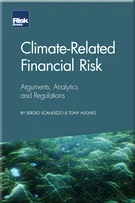Introduction to Stress Testing: Approaches, Methods and Applications
Introduction to Stress Testing: Approaches, Methods and Applications
Governance over Stress Testing
Stress Testing and Other Risk-Management Tools
Stress Testing for Market Risk
The Evolution of Stress Testing Counterparty Exposures
Operational Risk: An Overview of Stress-Testing Methodologies
Stress Testing of Bank Loan Portfolios as a Diagnostic Tool
Stress-Test Modelling for Loan Losses and Reserves
A Framework for Stress Testing Banks’ Corporate Credit Portfolio
EU-Wide Stress Test: The Experience of the EBA
Stress Testing Across International Exposures and Activities
Liquidity Risk: The Case of the Brazilian Banking System
Determining the Severity of Macroeconomic Stress Scenarios
Banks across the globe faced significant challenges during the 2007–9 financial crisis. Declining capital ratios, equity prices, government takeovers and subsidies by the public sector have been norms rather than special cases in many healthy “free-market” economies. The crisis caused the confidence of investors, market makers and lenders to plummet. Local and international regulators attempted to restore confidence across the banking system in general, but particularly with the goal of boosting lending and capital structure. Among other initiatives, regulators are trying to implement stress testing of banks in order to lower or even prevent the possibility of a future banking crisis. The exact details of these tests vary according to specific economies and regulators, but all are intended to examine how banks perform under an adverse or unexpected economic environment, with regard to both macroeconomic uncertainty or bank-specific asset-liability and off-balance-sheet activities. These tests are designed not only to understand the vulnerability of banks, but also to make sure that banks are prepared to face adverse situations with the capital to mitigate potential losses or non
Copyright Infopro Digital Limited. All rights reserved.
As outlined in our terms and conditions, https://www.infopro-digital.com/terms-and-conditions/subscriptions/ (point 2.4), printing is limited to a single copy.
If you would like to purchase additional rights please email info@risk.net
Copyright Infopro Digital Limited. All rights reserved.
You may share this content using our article tools. As outlined in our terms and conditions, https://www.infopro-digital.com/terms-and-conditions/subscriptions/ (clause 2.4), an Authorised User may only make one copy of the materials for their own personal use. You must also comply with the restrictions in clause 2.5.
If you would like to purchase additional rights please email info@risk.net










